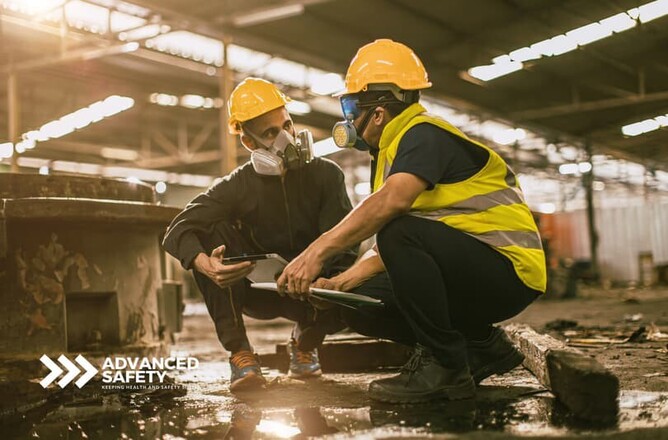The Difference Between a Hazard and a Risk
The difference between a hazard and a risk is simple:
A hazard is anything that could cause harm. A risk is the chance that harm will actually happen, and how serious it could be.
That’s it - but understanding this difference is crucial for keeping people safe at work and for complying with New Zealand’s Health and Safety at Work Act 2015 (HSWA).
Why Knowing the Difference Between a Hazard and a Risk Matters
Many businesses mix these terms up, but getting them right changes how you manage safety.
When you understand the difference between a hazard and a risk, you can identify dangers early, control them better, and protect your team before an incident occurs.
Good health and safety isn’t about paperwork — it’s about recognising what can hurt people, then reducing the chances of it happening.
Want to discuss your safety goals?
Contact Advanced Safety for professional guidance and support.
Contact Us TodayDefining a Hazard in the Workplace
A hazard is anything that has the potential to cause harm to people, property, or the environment.
It doesn’t mean harm will occur — just that it could.
Examples of workplace hazards:
A wet floor (slip hazard)
Faulty wiring (electrical hazard)
Loud machinery (noise hazard)
Working at height (fall hazard)
Fatigue or stress (psychosocial hazard)
If it can hurt someone, damage equipment, or cause illness — it’s a hazard.
Defining a Risk in the Workplace
A risk is the likelihood and severity of harm actually occurring from a hazard.
For example:
The wet floor is the hazard.
The risk is that someone may slip, fall, and break their wrist.
So, while hazards exist everywhere, the risk depends on how people interact with them and how well controls are in place.
Table: The Difference Between a Hazard and a Risk
Aspect | Hazard | Risk |
|---|---|---|
Meaning | Something that can cause harm | The likelihood that harm will occur and how serious it might be |
Focus | Source of potential harm | Probability and impact of that harm |
Example | Chemicals stored in a warehouse | The risk of workers inhaling fumes or being burned |
Control | Remove or isolate the hazard | Reduce the likelihood or severity of harm |
Responsibility | Identify and list hazards | Assess and manage risks |
Why the Difference Between a Hazard and a Risk Is Important for NZ Businesses
In New Zealand, under the HSWA 2015, all PCBUs must identify hazards and manage risks.
You can’t manage what you don’t understand — that’s why knowing this difference matters.
Businesses that mistake hazards for risks often:
Focus too much on lists, not outcomes
Miss the most serious threats
Fail to control everyday dangers
By teaching your team the difference between a hazard and a risk, you help them think critically and act safely.
Practical Tips: Managing Hazards and Risks in Your Workplace
Identify hazards. Walk through your site and list anything that could cause harm.
Assess the risk. Ask: how likely is harm to happen, and how bad would it be?
Control the hazard. Eliminate, isolate, or minimise it.
Review regularly. Work changes – your controls should too.
Engage workers. They often see risks management misses.
💡 Tip: Use the Compliance Compass to map your organisation’s strengths and weaknesses. It shows how effectively you identify and manage both hazards and risks.
The Business Benefits of Understanding Hazards and Risks
Knowing the difference between a hazard and a risk helps you:
Reduce incidents and costs
Build a safer, happier workplace
Strengthen compliance confidence
Improve your organisation’s reputation
Safe companies don’t just prevent injuries — they perform better.
Take Action: Assess Your Hazards and Risks
Understanding is step one. Action is step two.
The Compliance Compass Assessment helps you:
Benchmark your current health and safety performance
Identify gaps in hazard and risk management
Receive a tailored roadmap for improvement
FAQs: The Difference Between a Hazard and a Risk
What is the difference between a hazard and a risk?
A hazard is anything that could cause harm. A risk is the chance and severity of that harm happening.
What are examples of hazards and risks in the workplace?
Hazard: a wet floor. Risk: someone slipping and being injured.
Hazard: loud noise. Risk: hearing loss over time.
Why is it important to know the difference between a hazard and a risk?
Because it helps you control dangers more effectively and meet legal duties under HSWA 2015.
Who is responsible for identifying hazards and managing risks?
Everyone – from directors to frontline workers – shares responsibility under NZ law.

